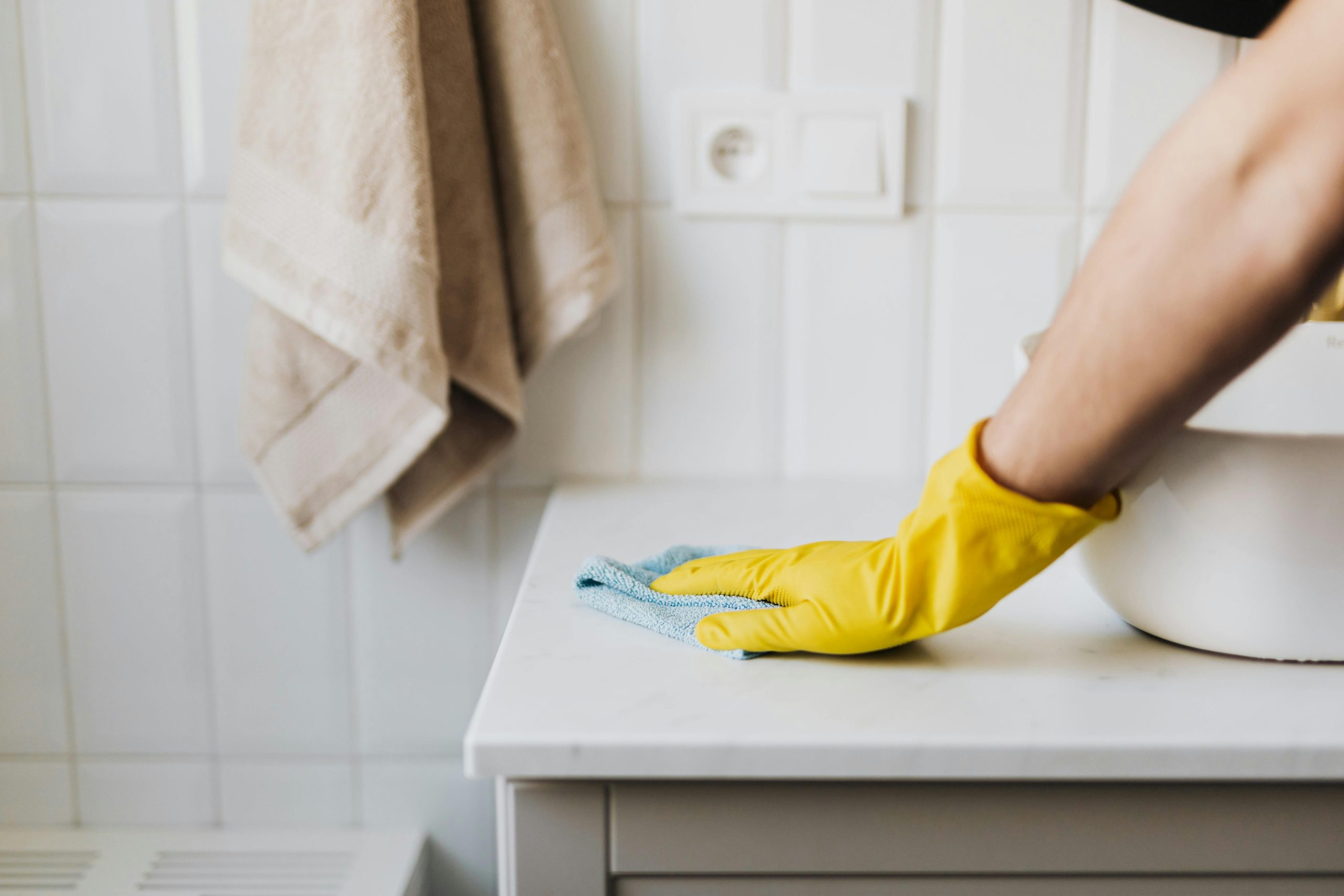“Home Alone” Security Tips for the Holiday Season

The holidays are a time for family, fun, and—if you’re not careful—unwelcome visitors of the Wet Bandit variety. Luckily, we can all learn a thing or two about home security from Home Alone. While you might not need to set up booby traps involving tarantulas and paint cans, you can definitely keep your house safe this season with some clever (and slightly less dramatic) strategies.
Here’s how to channel your inner Kevin McCallister and outsmart the bad guys this holiday season:
1. Lock the Doors. Seriously.
The McCallister family was in such a rush to get to Paris, that they left their kid behind and forgot to lock up properly. Don’t be that family. Before you leave, double-check every door and window, even the ones you never use. If you have time, throw in a “Hands off my house!” sign for good measure.
2. Make It Look Like Someone’s Home
Kevin’s “party” scene with mannequins and cardboard cutouts was genius, but we can simplify this. Use smart plugs to turn lights on and off or program your TV to play festive movies on a loop. If anyone peeks in, they’ll assume your family is home watching It’s a Wonderful Life for the 27th time.
3. Stop the Pile-Up
Nothing says “Please rob me” like a front porch overflowing with newspapers and packages. Ask a friend or neighbour to clear them away—or invest in a big mailbox. Just don’t rig it with a blowtorch. That’s taking things too far.
4. Install a Video Doorbell
If Kevin had a video doorbell, he could’ve avoided running around like a maniac and just scared off the Wet Bandits by yelling, “Smile, you filthy animals!” remotely. A modern one even lets you call the cops with the touch of a button—no DIY traps required.
5. Keep Valuables Out of Sight
Kevin knew the power of pizza to lure criminals, but your high-tech gadgets and holiday gifts are just as tempting. Keep them out of sight. (And maybe stash a slice of pizza in the fridge for emergencies—just make sure your sibling doesn’t get to it first.)
6. Set Up “Creative” Deterrents
Kevin’s traps were legendary, but you can achieve the same effect with a little less chaos. A fake dog barking, a well-placed motion light, or even an outdoor speaker playing loud “home improvement” noises can make burglars think twice. If all else fails, get a cardboard cut-out of The Rock and place it in a window.
7. Have a Neighbour Help Out
Kevin had Old Man Marley keeping an eye on things, and look how that turned out! Ask a neighbour or friend to check on your house. They don’t have to shovel snow with a menacing glare, but it wouldn’t hurt.
8. Plan for Package Thieves
Porch pirates are the 2020s version of the Wet Bandits, and they’re everywhere. Use a delivery locker, get your packages sent to your workplace, or consider rigging up a fake box filled with glitter. It won’t stop them, but it will make your day.
With a little planning and a touch of creativity, you can keep your home safe this holiday season without resorting to swinging paint cans. (Though let’s be honest, that scene was satisfying.)
Happy Holidays, and may your season be merry, bright, and burglar-free! 🎄
Real Estate Market Analysis for November 2024

As we approach the end of 2024, it’s a great time to reflect on how the Peterborough real estate market has evolved. November’s market stats offer valuable insights into key trends and shifts compared to the same time last year. Let’s break down the numbers and what they mean for buyers and sellers.
Sales Activity is Heating Up
In November 2024, Peterborough saw 72 homes sold, a significant 22% increase from the 59 sales recorded in November 2023. This uptick suggests that buyer activity has remained strong despite broader economic challenges. For sellers, this means there is steady demand in the market, although pricing strategies remain crucial in the current environment.
Prices Reflect Market Adjustments
The average sale price in November 2024 was $581,964, marking a 10% decline compared to November 2023’s average of $649,903. This adjustment aligns with trends across many Ontario markets, where higher interest rates and affordability concerns have softened prices. For buyers, this presents an opportunity to enter the market at more accessible price points.
Inventory Growth Supports Balanced Conditions
November 2024 saw 225 active listings, a 20% increase from the 188 listings available in November 2023. This growth in inventory is providing buyers with more options while preventing the market from becoming overly competitive. Sellers should note that while homes are selling, the increased supply means pricing your property accurately is more important than ever.
Homes Selling Faster
The average number of days on the market in November 2024 was 28 days. This is a strong indicator that homes are moving at a reasonable pace, balancing buyer interest with an expanded inventory. Sellers can feel confident that well-priced and well-presented homes will attract attention quickly.
What Do These Trends Mean for You?
- For Buyers: The decline in average sale price and increase in inventory make this a favourable time to explore the market. With homes selling in under a month on average, staying prepared and pre-approved is key.
- For Sellers: While sales activity is up, pricing is crucial in a more balanced market. Partnering with an experienced real estate professional can ensure your home is marketed effectively to stand out.
As Peterborough’s market adjusts, it’s clear that both buyers and sellers have opportunities. Whether you’re considering making a move or just staying informed, understanding these trends is essential for navigating the ever-changing real estate landscape.
Need Expert Advice?
If you’re curious about how these stats impact your specific real estate goals, contact us at Century 21 United Realty. Our team is here to help you make informed decisions in Peterborough and the Kawartha’s dynamic market. We always have an agent on duty to help. Call our office at 705-743-4444 and we will be happy to direct you to a REALTOR® to answer your questions.
*All data from CLAR/TRREB 2024 & InfoSparks®© 2023 MLS® Resale Residential. Information deemed reliable but is not guaranteed.
Highlighted below are some of the major areas we cover with our stats:
Selling Your Home During the Holidays

Selling your home during the holiday season can be challenging but also rewarding. While the market may seem quieter, this time of year brings unique opportunities to showcase your home to serious buyers who are motivated to purchase. Here’s how you can successfully navigate selling your home during the holidays.
1. Create a Warm and Inviting Atmosphere
The holidays are all about comfort and joy, so use this to your advantage. Tasteful decorations, cozy lighting, and a hint of seasonal scents like cinnamon or pine can create a welcoming environment that appeals to buyers. Be mindful not to overdo it—less is more when it comes to holiday décor, as you want buyers to focus on your home’s features, not just the decorations.
2. Keep Curb Appeal in Check
Winter weather can make outdoor spaces less appealing, but a little effort goes a long way. Ensure walkways are clear of snow and ice, and add a touch of charm with a festive wreath or string lights. If you have outdoor seating, consider setting it up with warm throws to help buyers envision the space year-round.
3. Highlight Year-Round Features
Showcase how your home functions in all seasons. Highlight features like a fireplace, energy-efficient windows, or a spacious mudroom—these can be especially appealing during colder months. If your home has outdoor amenities like a hot tub or heated patio, don’t hesitate to highlight those too.
4. Be Flexible with Showings
The holiday season is busy for everyone, so it’s important to be accommodating with showing times. Work with your real estate agent to plan a schedule that balances your holiday plans and the need to keep your home accessible to prospective buyers.
5. Market Strategically
While there may be fewer buyers during the holidays, those who are looking are often serious and ready to act. Use this to your advantage with targeted marketing. Professional photography, virtual tours, and appealing online listings can make your home stand out.
6. Price Your Home Competitively
The holidays aren’t typically the time for speculative pricing. A well-priced home is more likely to attract serious buyers who are motivated to close quickly. Your agent can provide a market analysis to help you choose the right price.
7. Prepare for Winter Challenges
Cold weather can present unique challenges, such as tracking in snow or dealing with shorter daylight hours. Consider providing boot covers for visitors and scheduling showings during daylight to showcase your home in its best light.
8. Leverage Holiday Joy
The holidays evoke emotions of warmth and family, which you can use to help buyers imagine themselves living in your home. Create a scene—such as a dining table set for a holiday dinner or stockings hung on the mantle—that sparks their imagination.
Is Selling During the Holidays Right for You?
Selling your home during the holidays isn’t for everyone. If your schedule is packed or you’d prefer to enjoy the season without the added stress, it might be better to wait until the new year. However, if you’re motivated to sell, the holidays can present an opportunity to stand out in a quieter market.
By working with an experienced real estate agent, you can successfully navigate the holiday season and turn it into the perfect time to sell your home. Ready to take the next step? Contact us at Century 21 United at 705-743-4444 —we’re here to guide you every step of the way and we always have an agent on duty!
Recognizing Common Plumbing Issues in Your Home

Plumbing issues can sneak up on homeowners, causing significant inconvenience and potentially costly repairs if left unattended. Spotting the warning signs early can save you time, money, and stress. Here’s a guide to recognizing some of the most common plumbing issues in your home.
1. Leaky Faucets
That constant drip from your kitchen or bathroom faucet isn’t just annoying—it’s wasting water. Even a small leak can waste litres of water daily, increasing your water bill unnecessarily. Most often, leaky faucets are caused by worn-out washers or seals, which are easy to replace.
2. Slow Drains
If your sink, shower, or bathtub is draining slower than usual, it might be due to a clog. Hair, soap residue, grease, and food particles are common culprits. Regularly cleaning drain traps and using strainers can prevent this issue. Persistent clogs, however, may require professional help, as they could indicate a more severe blockage deeper in the pipes.
3. Running Toilets
A running toilet can waste hundreds of litres of water each day. This issue often stems from a faulty flapper valve, which controls the water flow from the tank to the bowl. Replacing the valve is a straightforward fix, but if the problem persists, it could point to sediment buildup or issues with the float mechanism.
4. Low Water Pressure
Weak water flow from your faucets or showerheads is frustrating and often a sign of an underlying problem. It could be caused by mineral buildup in aerators, pipe corrosion, or even hidden leaks. Cleaning or replacing aerators can help, but if the issue persists, a plumber should assess the situation.
5. Water Stains and Damp Spots
Water stains on ceilings or walls are clear signs of a leak. Damp spots on the floor near appliances like dishwashers or washing machines can also signal trouble. These issues may result from cracked pipes or loose connections and should be addressed immediately to prevent further water damage.
6. Unusual Noises
Banging, whistling, or gurgling sounds in your plumbing can indicate air trapped in the pipes, loose fittings, or issues with water pressure. These noises, often referred to as “water hammer,” should be investigated promptly, as they can lead to pipe damage if ignored.
7. Foul Odours
If you notice a sewer-like smell coming from your drains, it could mean a dry P-trap (the curved pipe under your sink) or a more serious problem with your sewer line. Running water through infrequently used drains can fix the former, but persistent odours require professional intervention.
8. Sudden Spikes in Water Bills
An unexplained increase in your water bill is often a red flag for hidden leaks. Check your water meter and inspect your home for visible leaks. If nothing seems amiss, consult a plumber to find the source of the problem.
Preventative Tips
- Inspect your plumbing regularly for any visible signs of wear or damage.
- Avoid pouring grease, oil, or food scraps down the drain.
- Use drain strainers to catch debris before it causes clogs.
- Schedule annual plumbing inspections to identify potential issues early.
When to Call a Professional
While some minor plumbing issues can be fixed with DIY solutions, others require professional expertise. If you’re dealing with persistent problems, major leaks, or unexplained water damage, don’t hesitate to contact a licensed plumber.
Staying vigilant and addressing plumbing issues early can help maintain your home’s comfort and prevent costly repairs. Keep an eye on these common warning signs to keep your home’s plumbing system in tip-top shape!
Mould and Mildew: How to Spot, Prevent, and Address These Common Home Issues

Mould and mildew can be more than just unsightly nuisances in your home—they can pose serious health risks and cause long-term damage if left unchecked. These common issues thrive in damp, poorly ventilated areas, making bathrooms, basements, and kitchens particularly susceptible. Here’s what you need to know about spotting, preventing, and tackling mould and mildew in your home.
What’s the Difference Between Mould and Mildew?
Mold and mildew are both types of fungi, but they differ in appearance and impact:
- Mildew: A surface-level fungus that often appears as a white or grey powdery substance. It’s typically easier to clean and less harmful.
- Mould: A more invasive fungus that can appear in various colours, from black and green to orange. Mould can damage materials it grows on and may cause respiratory issues if left untreated.
Signs of Mould and Mildew in Your Home
- Visible growth: Mildew often looks like spots on surfaces, while mould can appear fuzzy or slimy.
- Musty odours: A persistent, damp smell can indicate hidden mould growth.
- Health symptoms: Allergies, respiratory issues, or skin irritation may worsen due to mould exposure.
- Peeling paint or warped walls: These can be signs of excess moisture and potential mould problems.
Common Causes of Mould and Mildew
- Excess humidity: Poor ventilation or high indoor humidity provides the perfect environment for fungal growth.
- Leaks: Roof, plumbing, or window leaks can introduce moisture into hidden areas.
- Poor drainage: Water pooling around your home’s foundation can seep inside and encourage mould growth.
- Inadequate ventilation: Without proper airflow, moisture from daily activities like cooking and showering can linger.
Preventing Mould and Mildew
- Control moisture: Use dehumidifiers and fix leaks promptly. Keep indoor humidity levels between 30% and 50%.
- Improve ventilation: Ensure proper airflow in kitchens, bathrooms, and laundry rooms. Use exhaust fans or open windows when possible.
- Regular cleaning: Clean high-risk areas, such as shower tiles and grout, with mould-killing solutions.
- Inspect your home: Regularly check for leaks, damp spots, or signs of water damage.
What to Do If You Find Mould or Mildew
- Small areas: For small mildew patches or surface-level mold, use household cleaners like vinegar or a bleach solution. Always wear gloves and ensure the area is well-ventilated.
- Larger infestations: If mould covers more than 10 square feet or has penetrated walls, call a professional mould remediation service to ensure safe removal.
- Address the source: Fix leaks, improve drainage, or enhance ventilation to prevent mould from returning.
When to Seek Professional Help
While minor mildew issues can often be managed with DIY solutions, larger or recurring mould problems require professional intervention. Mould can sometimes grow in hidden areas like behind walls or under flooring, making it difficult to eliminate without specialized equipment.
By staying vigilant and proactive, you can keep mould and mildew at bay, protecting your home and your family’s health. If you suspect a serious mould problem or need guidance, reach out to local professionals to address the issue effectively.
Your home is your haven—don’t let mould and mildew take over!
Streamline Home Maintenance with Smart Home Devices

Maintaining a home can be time-consuming, but smart home devices are here to help. These innovative gadgets do more than just make your life easier—they can also prevent costly repairs and keep your home in top shape. Here’s how incorporating smart technology into your home can revolutionize your approach to maintenance.
1. Smart Thermostats
Smart thermostats like the Nest or Ecobee don’t just adjust temperatures—they learn your habits to optimize heating and cooling. Some models can even alert you when your HVAC system needs maintenance, helping you avoid breakdowns during extreme weather.
Pro tip: Set up temperature alerts to prevent pipes from freezing during the winter months.
2. Leak and Flood Sensors
Water damage is one of the most common and expensive home repairs. Smart leak detectors placed near sinks, water heaters, or washing machines send instant alerts to your phone if they detect water. Some models can even shut off your water supply to prevent flooding.
Pro tip: Pair sensors with a smart home hub to automate immediate actions, like shutting off a smart valve.
3. Smart Lighting
Beyond convenience, smart lighting systems can enhance home security and save energy. They allow you to schedule lighting, detect motion, and monitor usage. For maintenance, many systems notify you when a bulb needs replacing.
Pro tip: Choose LED-compatible systems for long-lasting, energy-efficient lighting.
4. Smart Smoke and CO Detectors
Traditional smoke alarms are vital, but smart models add an extra layer of safety. These devices alert your phone in case of danger, even when you’re away. Some can also self-test and let you know when batteries are low, so you’re never caught off guard.
5. Robot Vacuums and Mops
Keeping floors clean is a never-ending chore, but smart vacuums like the Roomba can take care of it for you. Advanced models can learn your home layout, schedule cleaning times, and even empty themselves.
Pro tip: Use these devices to reduce allergens and keep your home tidy, especially if you have pets.
6. Smart Lawn Care
If you have a yard, a smart sprinkler system can take the hassle out of lawn maintenance. These systems use weather data to water your lawn efficiently, saving water and keeping your plants healthy.
7. Home Energy Monitors
Want to lower your utility bills? Smart energy monitors track your home’s electricity usage and highlight inefficient appliances. This information can help you make informed upgrades and catch issues like malfunctioning devices.
8. Voice Assistants as Maintenance Reminders
Devices like Amazon Alexa or Google Assistant can serve as your home’s personal assistant. Set reminders for regular maintenance tasks, like changing furnace filters or cleaning gutters, and ensure you never forget these critical chores.
Why Invest in Smart Home Maintenance?
Smart home devices offer a proactive approach to home maintenance, saving you time and money while giving you peace of mind. From preventing water damage to optimizing energy use, these tools make it easier to care for your home without added stress.
Ready to embrace the future of home maintenance? Start with one or two devices and expand as needed—your home (and your wallet) will thank you!
Tips for Keeping Your Garage Functional and Tidy

The garage can be an incredibly versatile part of the home, serving as storage, a workspace, or even a spot for a second vehicle. But all too often, garages become neglected and disorganized, cluttered with tools, equipment, and various household items. Regular upkeep of your garage can not only improve its functionality but can also prolong the lifespan of stored items and maintain property value. Here are some essential tips to help you keep your garage in top shape.
1. Organize and Declutter
Over time, garages can accumulate unused items, making it difficult to find what you need. Start with a full clean-out, sorting items into “keep,” “donate,” and “dispose” piles. Once you’ve decided what to keep, consider investing in shelving units, pegboards, and wall-mounted racks to maximize storage space. Label bins and containers to make finding things easier in the future. A well-organized garage will not only look better but will save you time when searching for items.
2. Clean Regularly
Keeping your garage clean helps prevent dust and debris from accumulating and also makes it a more pleasant space to work or park in. Sweep or vacuum the floors every month, and give surfaces a quick wipe down to remove dirt or cobwebs. If you notice oil stains on the concrete, use a commercial cleaner or a mixture of baking soda and dish soap to scrub them out. This will keep your garage floor looking fresh and free of slippery spots.
3. Check for Pests
Garages can be a popular spot for pests, especially as temperatures start to drop. Regularly check for signs of mice, insects, or other critters, and seal any cracks or gaps around doors and windows. Keep food items (like pet food) in sealed containers, and avoid storing cardboard boxes on the floor, as these can be attractive to rodents. If you encounter an issue, consider installing traps or calling a pest control professional.
4. Inspect Your Garage Door
Your garage door is one of the most important elements of this space, as it ensures security and keeps weather elements at bay. Make it a habit to inspect your garage door’s springs, cables, and rollers every six months. Lubricate moving parts to ensure smooth operation and look out for signs of wear or rust. If your garage door shows any signs of damage, it’s best to call a professional rather than attempt repairs yourself, as garage doors are under high tension and can be dangerous.
5. Maintain Climate Control
If your garage doubles as a workspace, you might consider ways to make it comfortable year-round. For cold months, check insulation around doors and windows, and use a space heater if necessary. In the summer, a fan or dehumidifier can help keep the space cooler and more comfortable. Adding a layer of insulation to the garage door can also help maintain a more stable temperature.
6. Inspect and Maintain Tools and Equipment
A garage often doubles as a workshop, and it’s where tools, lawn equipment, and other essentials live. Inspect items like lawnmowers, trimmers, and power tools to ensure they’re in working order. Keep blades sharp, motors clean, and store tools properly to prevent rust. Not only will this prolong their lifespan, but it will also make sure you’re ready for any task that comes up around the house.
7. Update Lighting
Good lighting can make a big difference in a garage, especially if you’re using it as a workspace. Replace any dim or burnt-out bulbs, and consider installing LED lights for better brightness and energy efficiency. Adding a motion sensor light near the garage door can also be handy for hands-free entry and extra security.
8. Keep the Floor Clear
Lastly, keep your garage floor clear of unnecessary items. Not only does this make cleaning easier, but it also provides space for safe movement and reduces tripping hazards. Use ceiling-mounted racks for larger items and wall-mounted hooks to keep bikes, ladders, and other bulkier items out of the way.
A clean, organized garage is not only more functional but also adds value to your home and makes daily life easier. With regular maintenance, a little cleaning, and a few organizational tools, your garage can become a well-kept and efficient space that serves a range of purposes. Whether it’s storing tools, housing your car, or acting as a workshop, taking care of your garage will ensure it continues to meet your needs for years to come.
Real Estate Market Analysis for October 2024

The real estate market in Peterborough, Ontario, showed strong momentum through October 2024, with year-over-year data reflecting both increased buyer activity and a modest rise in property prices. Let’s break down what this means for buyers, sellers, and our community as a whole.
October 2024 Market Highlights
In October 2024, Peterborough saw:
- 95 properties sold, compared to 66 in October 2023—a significant increase of 43.9%.
- An average sale price of $584,101, up from $560,551 in October 2023, reflecting a 4.2% year-over-year increase.
- 258 active listings, a slight increase from 241 in October 2023.
- 28 average days on the market, indicating that properties are moving at a healthy pace.
Analyzing the Increase in Sales
The 43.9% jump in the number of sales from last October suggests a heightened interest in Peterborough’s housing market. This increase may reflect several trends:
- Increased buyer confidence: With declining interest rates, buyers appear to feel more secure in making purchasing decisions.
- Growing interest in smaller cities: Peterborough has become increasingly attractive to buyers seeking a balance between affordability and lifestyle.
- Favourable timing for buyers and sellers: October’s balanced market has encouraged movement on both sides, with sellers more likely to meet buyer demand.
Rising Prices and What They Mean for Buyers
The 4.2% increase in the average sale price highlights steady price appreciation, with Peterborough remaining competitive in the Ontario housing market. For buyers, this means:
- It’s still possible to secure a property at a relatively reasonable price compared to larger Ontario cities, but waiting too long could lead to higher costs.
- Interest from out-of-area buyers, combined with local demand, could continue to support price growth, so acting now may help buyers avoid future price hikes.
For sellers, the increased property value indicates potential for good returns. If you’ve been considering selling, now is a favourable time to list and leverage the higher buyer demand.
Active Listings and Days on Market
With 258 active listings in October 2024—up slightly from 241 last year—there are more choices available, helping to keep the market balanced. However, a 28-day average time on the market suggests that well-priced homes are still moving quickly.
Key Takeaways
The Peterborough real estate market has seen notable growth this past year, with higher sales and a steady price increase. For potential buyers, this is an ideal time to explore available options before prices increase further. Sellers can take advantage of the heightened buyer interest to secure competitive offers and capitalize on rising property values.
Peterborough continues to stand out as an attractive destination, offering a unique mix of affordability, lifestyle, and investment potential. Whether you’re buying, selling, or simply watching the market, October’s stats reflect a strong and resilient housing market in our community.
If you’re looking to explore your options in the Peterborough real estate market, feel free to reach out to us at Century 21 United Realty. We always have an agent on duty to help. Call our office at 705-743-4444 and we will be happy to direct you to a REALTOR® to answer your questions.
*All data from CLAR/TRREB 2024 & InfoSparks®© 2023 MLS® Resale Residential. Information deemed reliable but is not guaranteed.
Highlighted below are some of the major areas we cover with our stats:

 Facebook
Facebook
 X
X
 Pinterest
Pinterest
 Copy Link
Copy Link
























